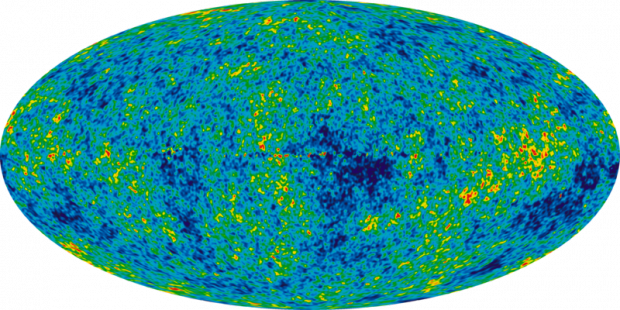
Cosmologists are finding circles in the sky�specifically, in the pattern of microwave background radiation, the echo of the Big Bang. Some think they’re traces of a time before time; others argue that they’re the “bruises” left by collisions with universes other than our own.
The time-before-time interpretation comes from Oxford mathematician, physicist, and polymath Roger Penrose and his Armenian colleague, V. G. Gurzadyan, who discern concentric circles in which the temperature of the Cosmic Background Radiation, or CBR, exhibits especially low variability. The effect is subtle; the average temperature of the CBR is less than three degrees above absolute zero, and the color differences in the lozenge-shaped image above map temperature differences of two ten-thousandths of a degree. To Penrose and Gurzadyan, these circles represent the ripples left from black-hole encounters emanating from a universe that existed before our own. In this theory, our universe emerges within the “space” left by previous-generation universes, somewhat like nesting Russian dolls. But to another group, such structures indicate pressure points where our cosmos made violent contact with others in a multiverse, a froth of bubble-like universes with radically different physics from our own.
The two interpretations presuppose rather different theories of the origin and ultimate fate of the universe. But other cosmologists are weighing in to question the significance of these vast ringlike structures�and whether or not they even exist. One thing is certain�wherever the cosmos comes from and whatever its fate will be, it’s full of stars.
[via Technology Review‘s Physics arXiv Blog] Gearfuse Technology, Science, Culture & More
Gearfuse Technology, Science, Culture & More


